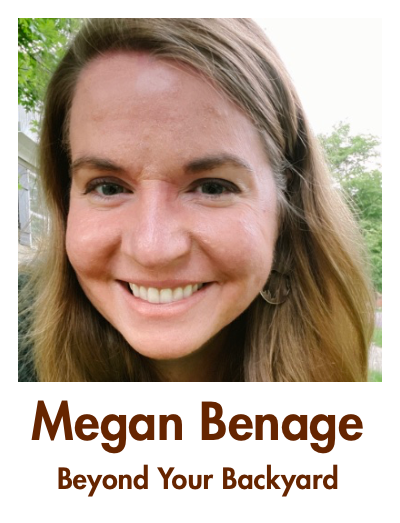Beyond Your Backyard: Prairie Conferences

By Megan Benage
The last week of June was the North American Prairie Conference in Altoona, Iowa.
The conference kicked off with a trip to the Hayden Prairie Preserve. We learned that Hayden prairie is one of the largest Iowa remnants outside of the Loess Hills. It is a beautiful prairie filled with life and yet, I was sad. It is a small space. And I found myself yearning to make it bigger. So that the sedge wrens, dickcissels, viceroys, and clay-colored beetles that we found would always be here. Would never be forced to move onward if this last little stalwart patch of prairie is lost. Everyone deserves to have a home, after all. It will take all of us together to make sure this place, their home, is always so.
Later during the conference we learned that in 1945 an Iowa botany professor, Dr. Ada Hayden, visited the site and made sure the family knew what a special site this was. That same year it became public land. Make no mistake, this special place remained so because of the family that stewarded it through the years, and now diligent wildlife managers have taken over the care of the stewardship watch. It sparked something in me. One person. One interaction. I don’t know what happened on that day in 1945, but I can imagine there were many excited gasps as each new plant was discovered. The sedge wrens and dickcissels watching the excited humans while the walking sticks ambled in the vegetation below, unbothered by the humans deciding their future. After all, walking sticks have important things to do in a day. People and the choices we make matter. There is power in the passion for prairie.
One of the keynote speakers, Dr. Laura Jackson with the Tallgrass Prairie Center, said the old adage “if you build it they will come” holds true. And that somehow when we reconstruct prairie, the wildlife that lives there finds it. “And if they’re not giving up, we shouldn’t either.”
In Minnesota, prairie used to cover 1/3 of the state with 18 million acres. Today, we have 250,000 acres of native prairie left.
Prairie is vitally important to all of us. Prairies like wetlands and woods are working together to produce clean air, filter water, and store carbon. The decisions we all make will determine the future. And when you look across a conference room filled to maximum capacity with 600 people representing 27 states and three countries who share a passion for prairie, there is really only one takeaway: hope. Hope that this much energy and passion combined will bring about change and with it a permanent legacy of prairie-for now and for the future ahead.
